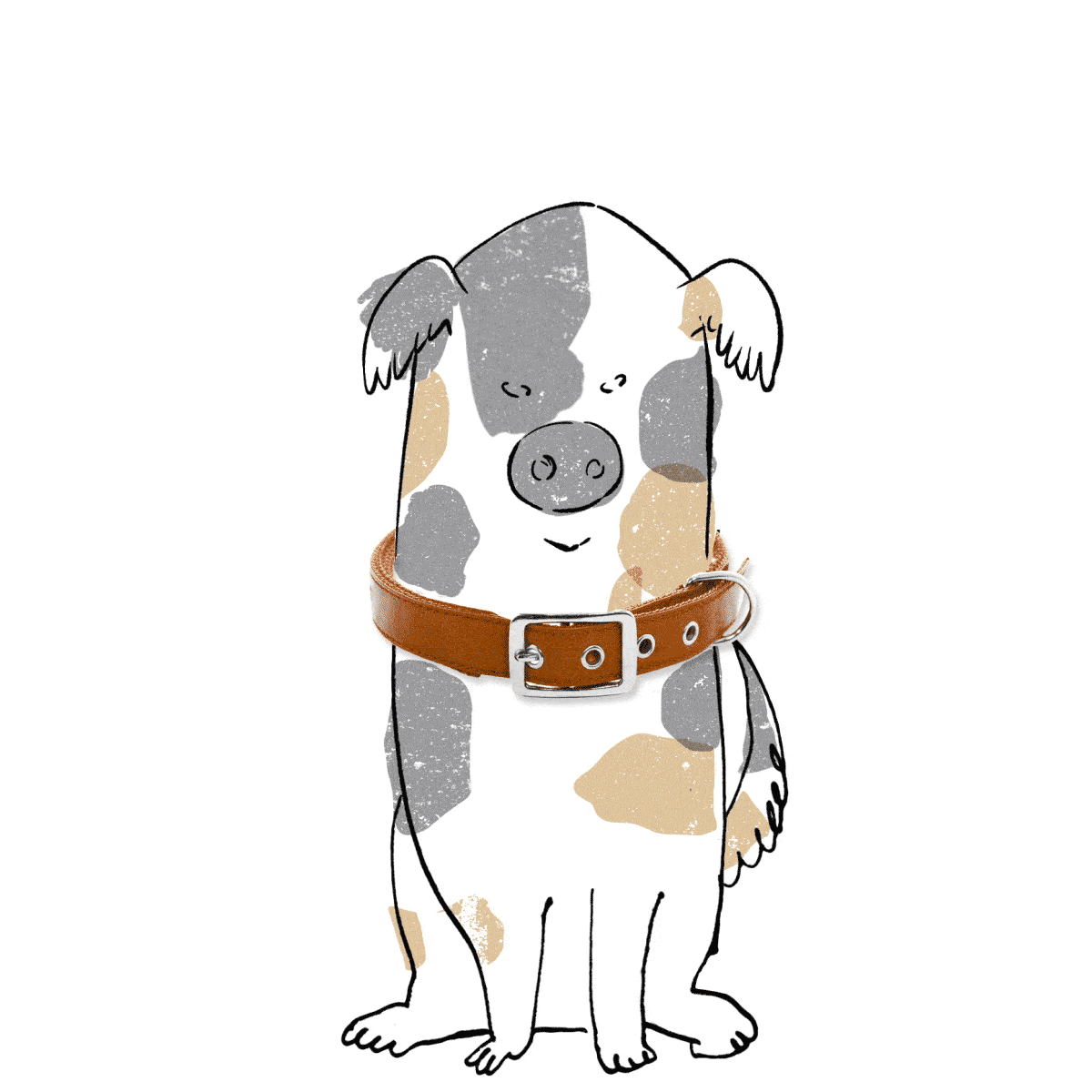13 Things Your Pet Is Trying to Tell You
Updated: Dec. 18, 2023

Here's a little insight into some common pet behaviors—and what they all mean.
It can be tough to know exactly what your pets want. With facial expressions, sounds, and movements that are so different from those of humans, animals can be hard to read. If you’re a pet owner, you’ve probably asked yourself some of the most common pet-behavior questions: Why does my dog follow me everywhere? Is my cat depressed? Why does my dog have the zoomies? But one of the most pressing queries has to do with what some common behaviors in pets really mean. We decoded them so you’ll be able to tell exactly what your pet wants in no time.
1. Put down your phone
Animals want our attention, and sometimes they’re quite overt about asking for it. Antics are often our pets’ way of telling us to stop what we’re doing and play with them. It’s why Fido constantly chases his tail and why Kitty keeps rolling around. A desperately bored dog or cat may resort to “bad” behaviors to elicit a reaction—even a negative one!
2. Feed me
Sure, your dog loves you, but that’s not why it’s licking your face. A puppy learns to lick its mother’s mouth to snag a little leftover food, so Spot isn’t kissing you in our sense of the word; he just wants a snack.
3. I’m stressed
Cat owners also misinterpret their furry friends’ kisses. While a cat might lick you to show affection, sometimes it’ll lick you to soothe itself. One way to tell if the licking is stress-related is to see if it goes on for an extended period of time. Birds also overgroom when they feel anxious. Some will even pluck out their own feathers.
4. My tail tells all
Dogs wag their tails to the right when they see something (or someone) they want to approach and to the left when they see something they want to avoid. When frightened, dogs tuck their tails in, while cats wrap theirs around themselves. And if a cat’s tail looks like a question mark, it’s itching to play—especially if the tip twitches.
5. Don’t dismiss my accidents
A house-trained dog that suddenly goes to the bathroom on the carpet could simply be dehydrated, but it could also have kidney failure, liver disease, or diabetes. And a cat that sprays outside its litter box might have kidney stones or a urinary tract infection, so mention your pets’ accidents to the vet, especially if they keep happening. Once you rule out a medical issue, try getting another litter box for your cat. If it keeps missing, it probably dislikes the box or wants another. (Cats generally need more than one.)
6. I can’t even look at you
At some point, you’ve probably uttered these words to someone who made you angry. Dogs think similarly, avoiding eye contact with anyone who spoils their mood. Another sign of ire: yawning. A yawning pup may not be tired but agitated, not bored but stressed. Similarly, lip-licking—when there isn’t food around to trigger it—is another sign of duress.
7. Let’s stay in
You might think your pooch is running around the backyard, having the time of its life while you’re away. But the reality is that it’s most likely just sitting in one spot for hours, anxiously waiting for you to return. Dogs actually prefer to be inside, ideally with their owners.
8. I need alone time
If your dog seems scared (because it’s hiding, say, or excessively panting) but is showing no obvious signs of distress, try giving it a break from people—yourself included. Even the most attention-hungry hound can benefit from having a calm space of its own to relax in, even if it’s just a crate.
9. Take my rear end in your face as a compliment
When a cat presents you with its behind, it means your pet sees you as a maternal figure; it used to do that as a kitten to get its mother to groom it. Another sure sign you’ve won its heart is if it blinks slowly while looking at you. It isn’t tired: It’s showing that it’s comfortable letting its guard down around you. Likewise, a dog that shows you its belly isn’t just inviting a rub. Rolling over is a sign of submission, which is how dogs convey trust.
10. My tummy hurts
If your dog arches its back while tucking its belly up, it’s in pain—likely gastrointestinal discomfort, but the pain could also be its back. A crouching cat could also be hurting, usually in the chest or abdomen. But if a tabby tilts its head to one side, it might mean the animal has pain there. If any of these postures persist, have your vet help you pin down the issue.
11. A storm is coming
When your dog bugs out, pay attention—especially if you live near a fault line. Even if you see clear skies, your pup might be sensing barometric pressure changes or even smelling the impending rain. The Max Planck Institute of Animal Behavior found that dogs can detect earthquakes up to 20 hours ahead of time.
12. I might be depressed
Pets have mental health needs too. Disinterest in food or favorite activities is a telltale sign of depression. A dog that pulls its ears back is likely experiencing anxiety (though your pet could also be suffering from an ear infection). Mention these behaviors to your vet, and don’t be afraid to ask about pet antidepressants.
13. You make me so happy
When they wiggle and wag their whole bodies, your dancing dogs and bouncing bunnies are literally jumping for joy. Birds that bob up and down and cats that come when you call them are showing their appreciation for you. And when your pets put their paws on you, seemingly for no reason, they’re gently showing you their gratitude.
Next, find out what your dog’s facial expressions really mean.


